When you’re working with limited square footage, floor lamps can quickly eat up valuable space. That’s why I prefer wall lighting. It gives me the brightness I need while keeping the floor clear for furniture and movement.
Over the years, I’ve tried different wall-mounted and plug-in lighting setups, and some have worked far better than others.
The beauty of wall lighting is that it blends function and style. You get to highlight architectural details, create cozy reading corners, or brighten up dark areas without bulky stands or cords snaking across the floor.
Furthermore, you don’t need to call in an electrician for most of these options. A little creativity, some clever placement, and the right fixtures can make a small space feel open and welcoming.
Below, I’m sharing my top five wall lighting ideas that have genuinely helped me save space while keeping my home looking warm and inviting. Let’s start with the simplest option that anyone can install in minutes.
1. Plug-in Wall Sconces
Plug-in wall sconces are the easiest way to add lighting without committing to hardwiring. I’ve used them in rentals where drilling was off-limits, and they instantly upgraded the space.
All you need is a power outlet nearby and a few screws or adhesive hooks to mount the fixture.
I love how they come in so many styles, from sleek modern brass to vintage-inspired glass shades. The best part is that you can position them exactly where you need task lighting, like over a desk, beside the bed, or near a reading chair.
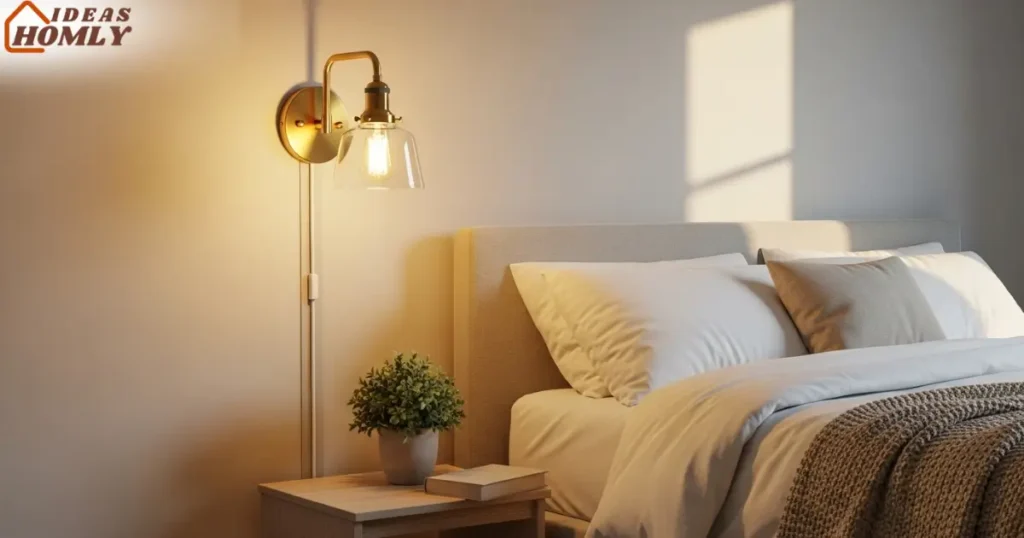
If you move furniture around often, plug-in sconces make it easy to change your lighting layout without a hassle.
Here’s a quick tip: hide the cord with a cord cover painted the same color as your wall. It makes the installation look intentional and polished.
2. Rechargeable or Battery-Operated Sconces
Sometimes, outlets aren’t where you want your light. That’s when rechargeable or battery-operated sconces come in handy.
I’ve used them in hallways and above artwork where wiring wasn’t practical. You can mount them anywhere and recharge them via USB when needed.
For me, the main advantage is total freedom in placement. No cables, no drilling near power lines, and no ugly extension cords running across the wall. They’re especially useful in older homes where rewiring would be expensive.
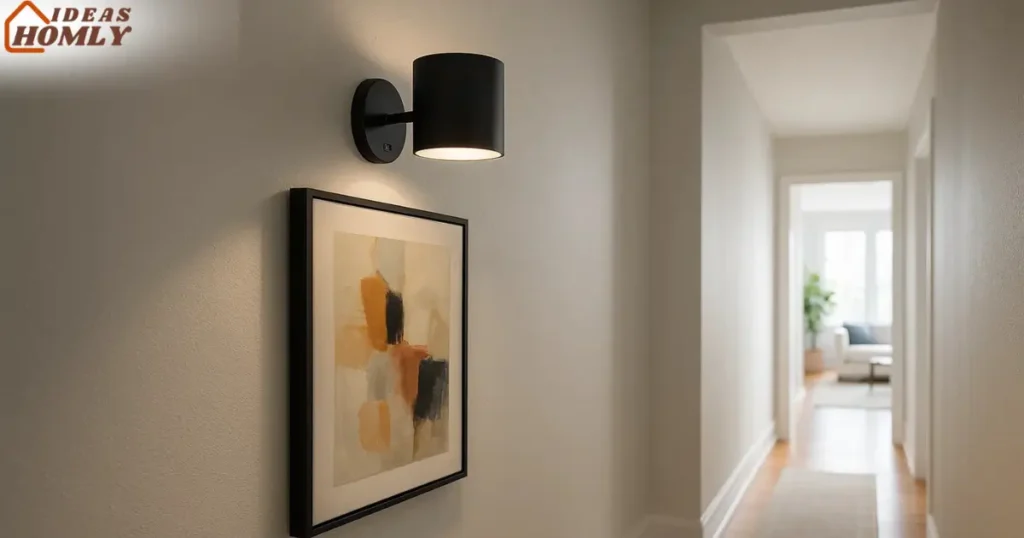
Battery-operated models have improved a lot in brightness and longevity. Some even have built-in dimmers, which is great for adjusting the mood in the evening. Just remember to keep a charging schedule so you’re never left in the dark.
3. Adjustable Swing-Arm Sconces
If you love flexibility in lighting, adjustable swing-arm sconces are a winner. I first added one above my desk, and it completely changed how I work at night.
You can pull the arm closer for focused light or push it back when you want a softer glow in the room.
They’re especially useful near beds or reading nooks where you might change positions often. I’ve even used them in the kitchen to spotlight a prep area when counter space was too tight for a lamp.
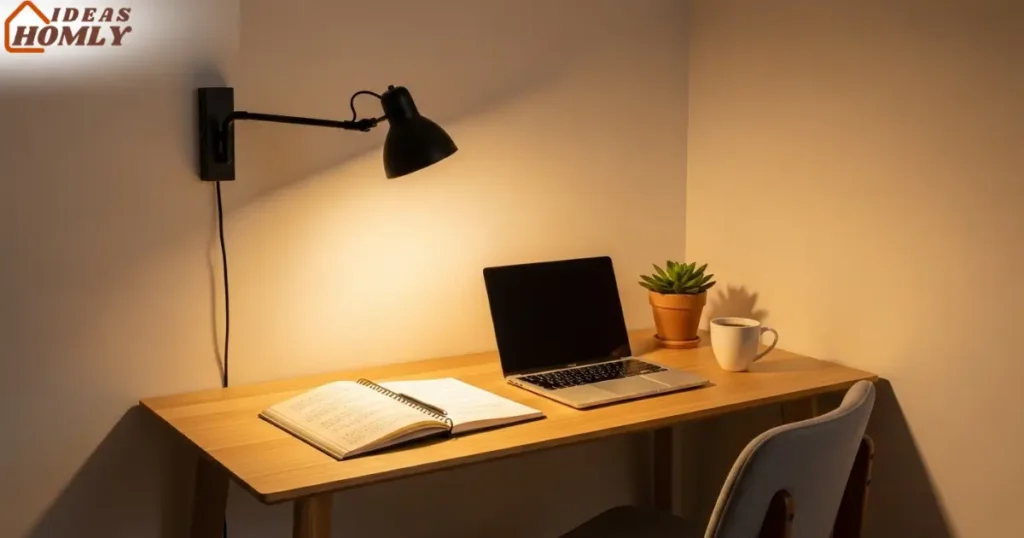
With the arm’s range of motion, you can control both the angle and distance of the light, which makes them more versatile than fixed sconces.
One small tip: choose a design with smooth swivel joints so you’re not fighting stiff hinges every time you move it. It’s a small detail, but it makes a big difference in everyday use.
4. Plug-in Pendant Lighting
I know pendant lights are usually thought of as ceiling fixtures, but plug-in versions are perfect for wall mounting. I’ve hung them over a side table in my living room and instantly freed up floor space that a lamp would have taken.
These lights often come with long cords, so you can drape them stylishly along the wall and anchor them with cord hooks before plugging them in.
I personally love using them to create a statement corner, pairing a textured pendant shade with a cozy armchair makes a small space feel intentional and designed.
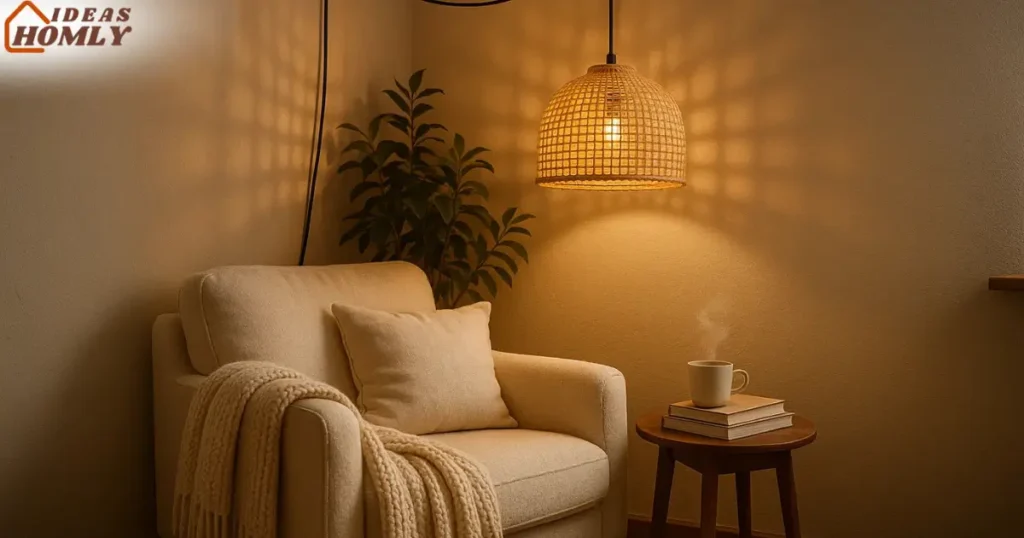
The biggest advantage here is the blend of function and decor. A pendant light can easily become a design focal point while still being entirely practical for task or ambient lighting.
5. Headboard-Integrated Lighting
This is one of my favorite bedroom upgrades because it combines furniture and lighting in one. I first tried a headboard with built-in lights when I downsized to a smaller apartment, and I couldn’t believe how much space it saved.
No need for bulky bedside tables or lamps, just a switch within arm’s reach for reading at night.
Some headboards have small LED strips, while others have adjustable reading lights mounted directly into the frame. I prefer the models with directional lights so I can read without disturbing anyone else in the room.
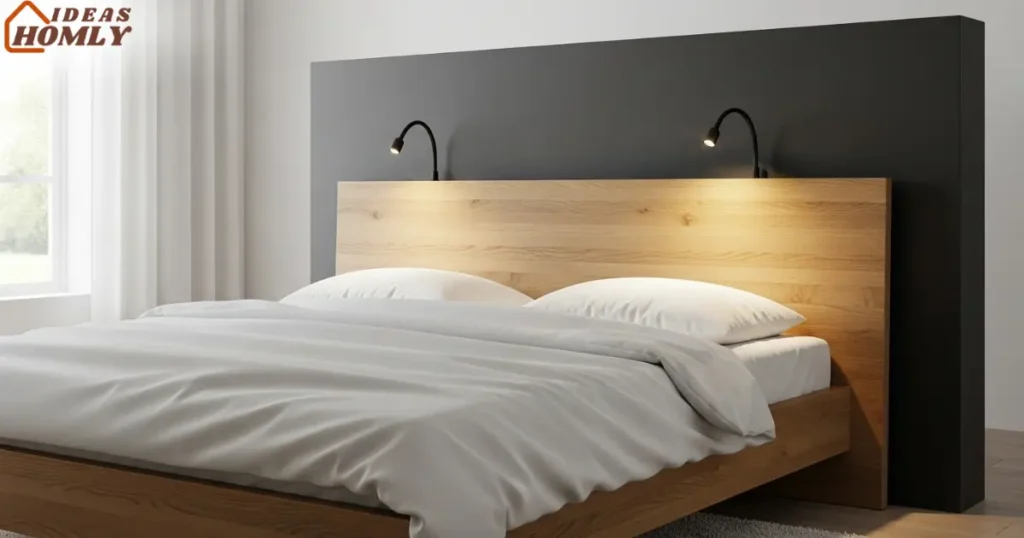
And since the lights are part of the headboard, the cords stay neatly tucked away, making the whole setup look streamlined.
If you already have a headboard you love, you can attach clip-on or adhesive LED fixtures to get the same effect without buying a new bed.
Choosing the Right Fixture Height and Style
Getting the placement right is just as important as picking the right fixture. I’ve learned the hard way that a sconce hung too high or low can be awkward to use.
For bedside sconces, I usually place the light about 20 inches above the top of the mattress. For reading corners or desks, I aim for the light to be slightly above eye level when seated.
When it comes to style, I try to match the lighting with the room’s overall mood. Sleek metal sconces work great in modern spaces, while rattan or fabric shades feel cozier in casual settings.
I also think about the light’s color temperature; warm white for relaxing areas, neutral white for workspaces.
Here’s a quick reference table I’ve made for myself:
| Lighting Type | Best Placement Height | Best Use Area | Light Temperature |
|---|---|---|---|
| Plug-in Wall Sconce | Eye level when seated | Bedside, Reading | Warm White |
| Rechargeable Sconce | Flexible | Hallways, Artwork | Warm White |
| Adjustable Swing-Arm Sconce | Eye level when seated | Desks, Reading Nook | Neutral/Warm White |
| Plug-in Pendant | Varies with design | Corners, Tables | Warm White |
| Headboard-Integrated Lighting | 20” above mattress | Bedroom | Warm White |
Conclusion
Wall lighting has completely changed how I design my spaces. By keeping the floor free of bulky lamps, I’ve been able to arrange furniture more creatively, make rooms feel larger, and still enjoy the lighting I need.
Whether it’s a plug-in sconce beside the bed, a rechargeable light in a hallway, or a pendant hanging over a reading chair, these fixtures give me flexibility and style without sacrificing space.
I’ve learned that the right height, style, and brightness can make any wall light both functional and decorative.
If you’ve been struggling to add more light without cluttering the floor, start with one of these five ideas. Even a single well-placed wall fixture can make a room feel brighter, more spacious, and far more inviting.
FAQs
Yes, you can. Plug-in sconces, rechargeable lights, and clip-on fixtures can all be mounted with basic tools. I’ve installed them myself with just a screwdriver and some wall anchors, avoiding any electrical work.
I usually place them around 20 inches above the top of the mattress. This height provides enough clearance for reading and prevents the light from shining directly into your eyes when lying down.
Many are. I use a rechargeable sconce with LED bulbs that provides focused task lighting. Just make sure to choose one with at least 300 lumens for comfortable reading.
Cord covers are my go-to solution. I paint them to match the wall, so the installation looks neat and intentional. Some people also run cords along furniture edges to keep them out of sight.
Absolutely. I’ve used plug-in pendant lights anchored to wall hooks for a cozy reading corner. They add character, save space, and can be easily moved if you want to change the layout.

